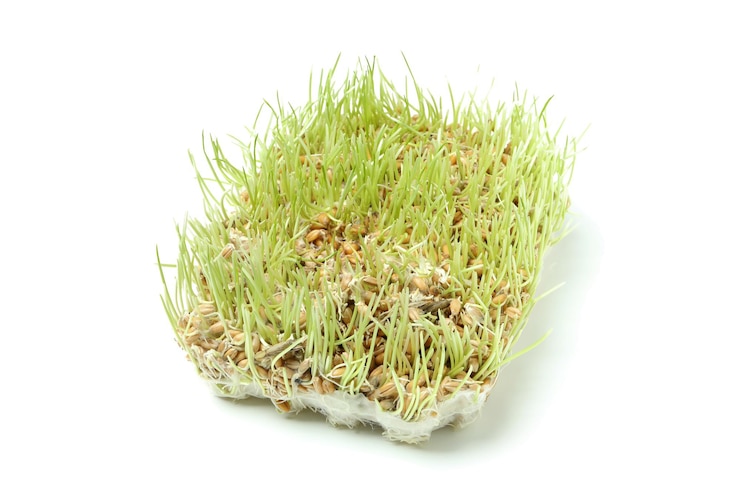Sprouts and Sprouted Grain- Way to better nourishment
Sprouted Grains- A Modern Trend
As the focus has shifted in the last decade to healthier living and the right food choices, there has been an increase in the use of sprouted grains in the human diet.

Sprouted grains are simply whole-grain seeds that are germinated using adequate moisture and warmth and begin to sprout into a new plant. Sounds simple, right? Sprouting was a natural harvesting method in earlier times but with modern techniques of processing on the rise sprouting grains declined. Now, it is back in trend because we have realized that it is beneficial for good health. Nature is always the healer if we understand this!
Examples of Sprouted Grains include wheat, barley, millet, rye, oats, quinoa, buckwheat, and brown rice.
Unlocking Nutrition through Sprouting
Whole grains are seeds with protective compounds that keep all their nutrients locked away until it’s time to grow.
When these seeds are soaked, it activates enzymes that allow the seeds to grow into a small plant called sprout.
When the sprout starts to grow, it unlocks the nutrients and breaks it down to simpler form, so that it becomes easy to digest the grains.
Nutritional Value of Sprouted Grains
The process of sprouting increases the nutritional value of these grains which are:
Increases digestibility - Sprouting breaks down starches in grains into simple sugars, making it easier to digest.
Increases bioavailability of proteins -Sprouting breaks down proteins into peptides and amino acids, thereby increasing nutrient bioavailability and utilization by the body.
Increases absorption of minerals – Phytates present in plants decreases absorption of minerals in the body. Sprouting breaks down these phytates hence sprouted grains have more available minerals like iron, zinc and magnesium than mature grains.
Increases antioxidants – Sprouting releases more antioxidants that are naturally stored in the grain seeds.
Increases Vitamins - Sprouting increases the level of Vitamin B and Vitamin C in germinated grains.
Health benefits of sprouted grains
Sprouted grains are lower in starch than regular grains and higher in protein, vitamins, and minerals. Studies are being conducted on the health benefits and a few promising findings include
Lowered blood pressure
Diabetes-fighting properties
Decreased risk of cardiovascular disease
Protection against fatty liver disease
Adding Sprouted Grains into your Diet
Add them to salad, stir fry, to give that extra crunch and nutrition.
Replace refined flour with sprouted grain flours in baking to give it a healthy twist
Substitute your staple diet with these sprouts. eg. use sprouted brown rice instead of white rice Germinated brown rice is nutrient-dense, boosts the immune system, lowers blood pressure, and helps in reducing risk factors of heart disease, diabetes, and cancer
Add them as stuffing to parathas and sandwiches, the best way to make children have these healthy sprouts.
Make porridge with sprouted quinoa, buckwheat, or millet.
The Takeaway
As compared to whole grains, sprouting increases the nutrients and its digestibility. They are rich in antioxidants and other compounds, important for promoting health including weight loss, keeping a check on the blood sugar levels, and reducing risk factors for diseases like diabetes, hypertension, and heart diseases. They are easily incorporated into your diet by adding them to various recipes. Make these super healthy sprouts a part of your diet and enjoy its many health benefits for the long run.
Super Recipe with Sprouted Grains
Sprouted Brown Rice Pilaf (serves 4)
A middle eastern traditional dish made with a healthy twist!

Ingredients
1 cup sprouted brown rice
1 medium onion, finely chopped
¼ cup carrots, finely chopped
½ cup bell peppers, finely chopped
2-3 garlic cloves, finely chopped
1 tsp freshly ground pepper
¼ tsp cumin powder (jeera)
¼ tsp ground cinnamon
1 ½ cup vegetable broth
½ cup toasted almonds, chopped
2 tablespoons parsley, finely chopped
2 tbsp. olive oil
Fresh parsley sprigs for garnish
Method
Heat oil in a saucepan, add the onions, carrots, peppers, and garlic, and sauté for a couple of minutes.
Season with salt and pepper and cook until the onions are slightly soft.
Stir in the cumin, cinnamon, and rice. Cook, stirring frequently, for another 3-4 minutes until the grains appear a little translucent.
Add the vegetable broth, and bring to a boil.
Then cover the saucepan and simmer on a low flame, until the water is absorbed and rice is cooked.
Turn off the flames and remove the lid, let it cool for a few minutes. Later with a fork fluff the rice.
Place a clean kitchen towel to absorb steam over the saucepan and add the lid.
Allow it to sit undisturbed for 10 minutes. Stir in half of the toasted almonds and the chopped parsley.
Transfer the pilaf to a serving dish, sprinkle with the remaining chopped almonds and garnish with parsley sprigs.
Nutritional Information (per serving)
Energy | 244 kcal |
Carbohydrates | 20 gm |
Protein | 6 gm |
Fat | 13 gm |
Fiber | 4 gm |
Comments
Post a Comment